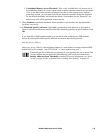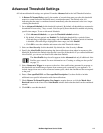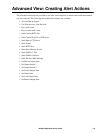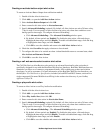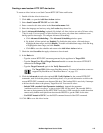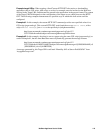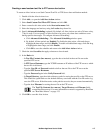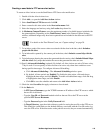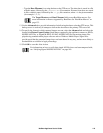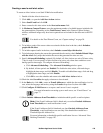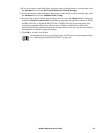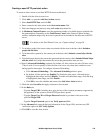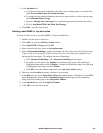
117NetBotz Appliance User’s Guide
Creating a send custom text file to FTP server alert action
To create an Alert Action to use Send Custom Text File to FTP Server alert notification method:
1. Double-click the Alert Actions icon.
2. Click Add... to open the Add Alert Action window.
3. Select Send Custom Text File to FTP Server and click OK.
4. Enter a name for this alert action in the Alert action name field.
5. Select the language and territory using the Locales drop-down list.
6. Specify Advanced Scheduling (optional). By default, all Alert Actions are active 24 hours a day,
7 days a week. You can specify an Alert Action to be active only when alert conditions occur
during specific time ranges. To configure Advanced Scheduling:
a. Click Advanced Scheduling.... The Advanced Scheduling window opens.
b. By default, all time periods are Enabled. To disable the alert action, click-and-drag to
highlight the time range, and click Disable. To enable a disabled time range, click-and-drag
to highlight the time range, and click Enable.
c. Click OK to save the schedule and return to the Add Alert Action window.
7. Check the alert Severities that apply to buttons to be activated.
8. In the Basic tab:
–In Text File Contents (inc. macros), type the data to include in the text file sent to the
specified FTP server.
–In FTP Server Hostname, type the TCP/IP hostname or IP address of the FTP server to which
the text file is delivered.
– Type the User ID and Password needed to deliver the text file to the FTP server at the
specified FTP Server Hostname.
– Type the Password again in the Verify Password field.
–In Target Directory, type the relative directory path for storing the text file on the FTP server.
This should be a path relative to the default directory associated with the User ID used to log
on to the FTP server. If the directories on the path do not exist, they are created automatically.
– Type the base Filename for storing the text file on the FTP server.
The Text File Contents (inc. macros), Target Directory and Filename fields
accept BotzWare macros. For more information on macros supported by BotzWare
see “BotzWare Macros” on page 133.
9. Click OK to save this Alert Action.




